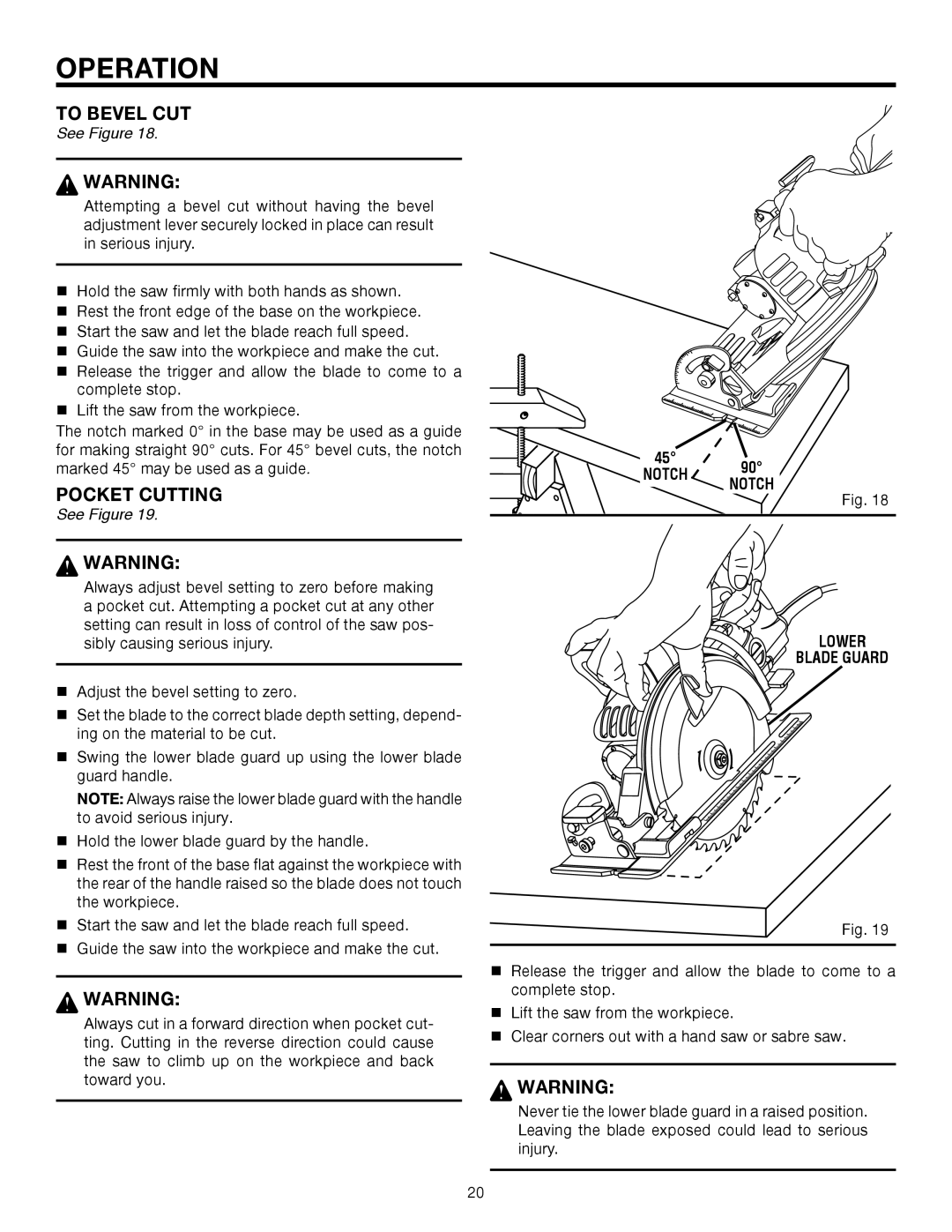
OPERATION
TO BEVEL CUT
See Figure 18.
![]() WARNING:
WARNING:
Attempting a bevel cut without having the bevel adjustment lever securely locked in place can result in serious injury.
Hold the saw firmly with both hands as shown.
Rest the front edge of the base on the workpiece.
Start the saw and let the blade reach full speed.
Guide the saw into the workpiece and make the cut.
Release the trigger and allow the blade to come to a complete stop.
Lift the saw from the workpiece.
The notch marked 0° in the base may be used as a guide for making straight 90° cuts. For 45° bevel cuts, the notch marked 45° may be used as a guide.
POCKET CUTTING
See Figure 19.
![]() WARNING:
WARNING:
Always adjust bevel setting to zero before making a pocket cut. Attempting a pocket cut at any other setting can result in loss of control of the saw pos- sibly causing serious injury.
Adjust the bevel setting to zero.
Set the blade to the correct blade depth setting, depend- ing on the material to be cut.
Swing the lower blade guard up using the lower blade guard handle.
NOTE: Always raise the lower blade guard with the handle to avoid serious injury.
Hold the lower blade guard by the handle.
Rest the front of the base flat against the workpiece with the rear of the handle raised so the blade does not touch the workpiece.
Start the saw and let the blade reach full speed.
Guide the saw into the workpiece and make the cut.
![]() WARNING:
WARNING:
Always cut in a forward direction when pocket cut- ting. Cutting in the reverse direction could cause the saw to climb up on the workpiece and back toward you.
45° 90°
NOTCH NOTCH
Fig. 18
LOWER
BLADE GUARD
Fig. 19
Release the trigger and allow the blade to come to a complete stop.
Lift the saw from the workpiece.
Clear corners out with a hand saw or sabre saw.
![]() WARNING:
WARNING:
Never tie the lower blade guard in a raised position. Leaving the blade exposed could lead to serious injury.
20
